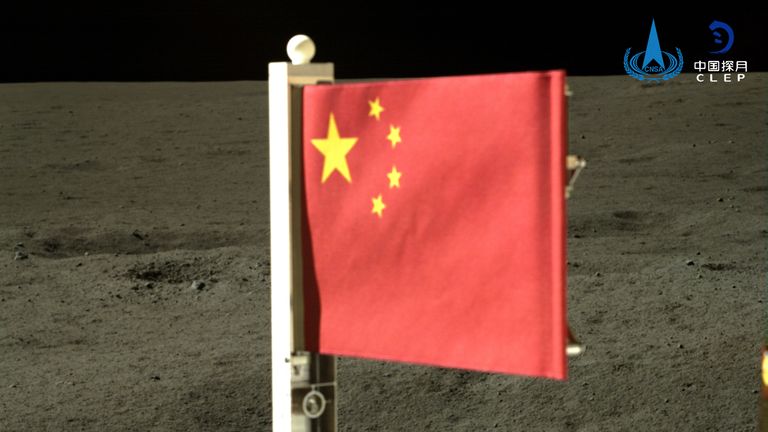A Chinese spacecraft is on its way back to Earth after becoming the first ever probe to collect samples from the far side of the moon.
The Chang’e-6 lifted off just after 12.30am UK time on Tuesday to begin its journey home, according to the China National Space Administration.
Officials said it had been successful in collecting rocks and soil – by using a drill and robotic arm to dig below the lunar surface.
After completing the task, the probe unveiled a Chinese flag.
Foreign Ministry spokesperson Hua Chunying wrote on X, formerly Twitter: “Mission accomplished!
“An unprecedented feat in human lunar exploration history!”
The spacecraft was launched last month and touched down on Sunday.
Its re-entry capsule is due to land in the deserts of China’s Inner Mongolia region on 25 June.
Missions to the moon’s far side, which permanently faces away from the Earth, are more difficult because a relay satellite is required to maintain communications.
The surface is also more rugged, with fewer flat areas to land.
China’s Xinhua News Agency said the landing site was the South Pole-Aitken Basin – an impact crater eight miles deep and 1,500 miles wide – which is thought to have been created more than four billion years ago.
It is the oldest and largest such crater on the moon, so could provide significant information because the original impact may have ejected materials from deep below its surface.
Read more:
The space race for the moon’s water
What you need to know about NASA and China’s space race
The mission is the sixth in the Chang’e moon exploration programme, which is named after a Chinese moon goddess.
It is also China’s second trip to the far side of the moon, with its craft Chang’e-4 becoming the first to successfully land there in 2019.
The mission comes amid a growing space rivalry among countries including China, India, Japan and the US.
Beijing aims to put a person on the moon by 2030, while US agency NASA hopes to achieve the feat again in September 2026.



























